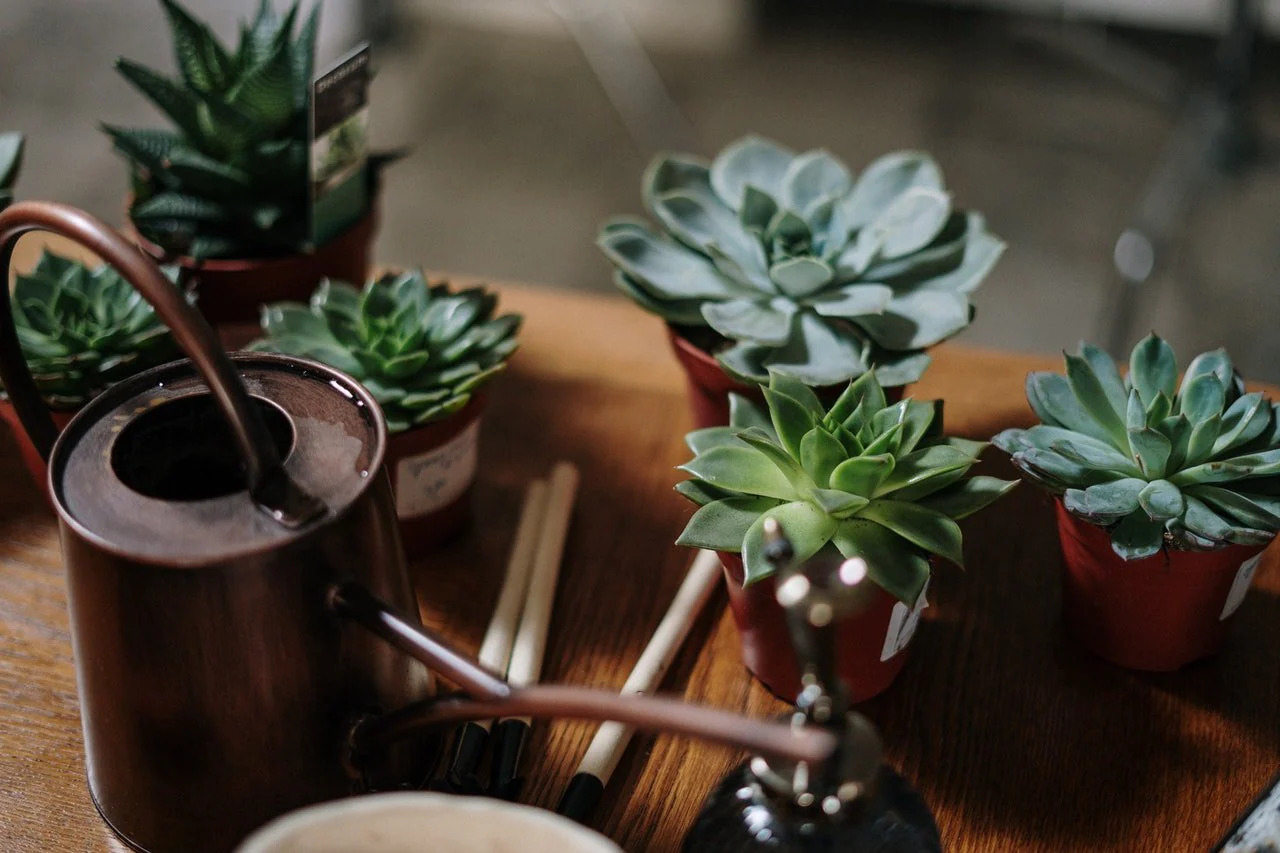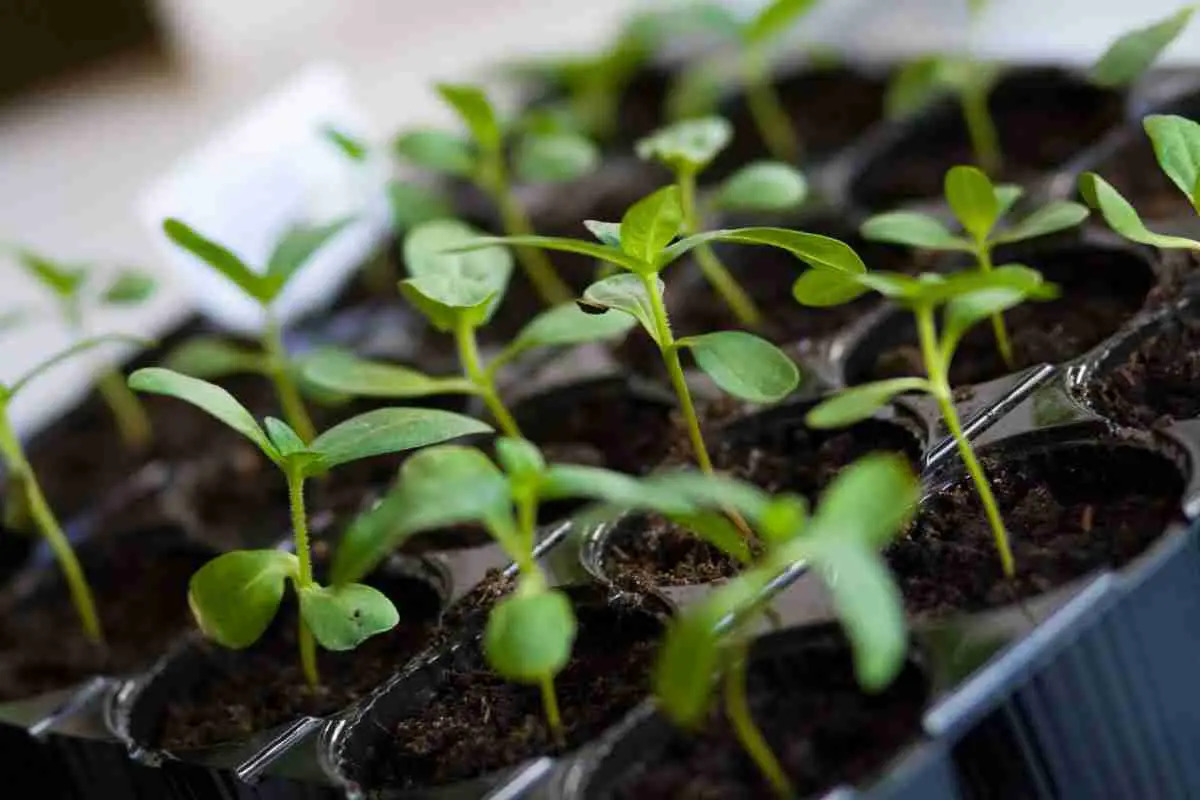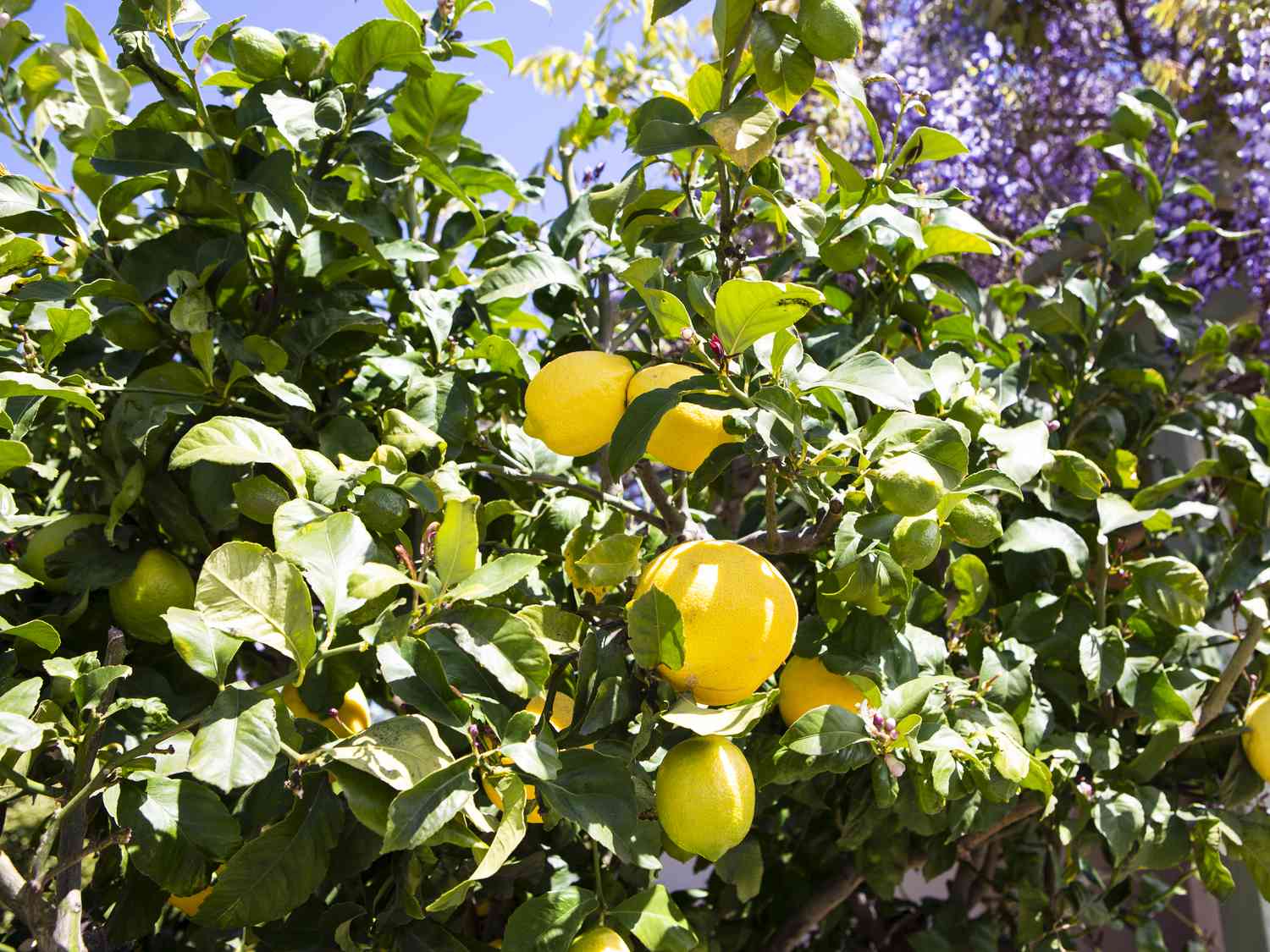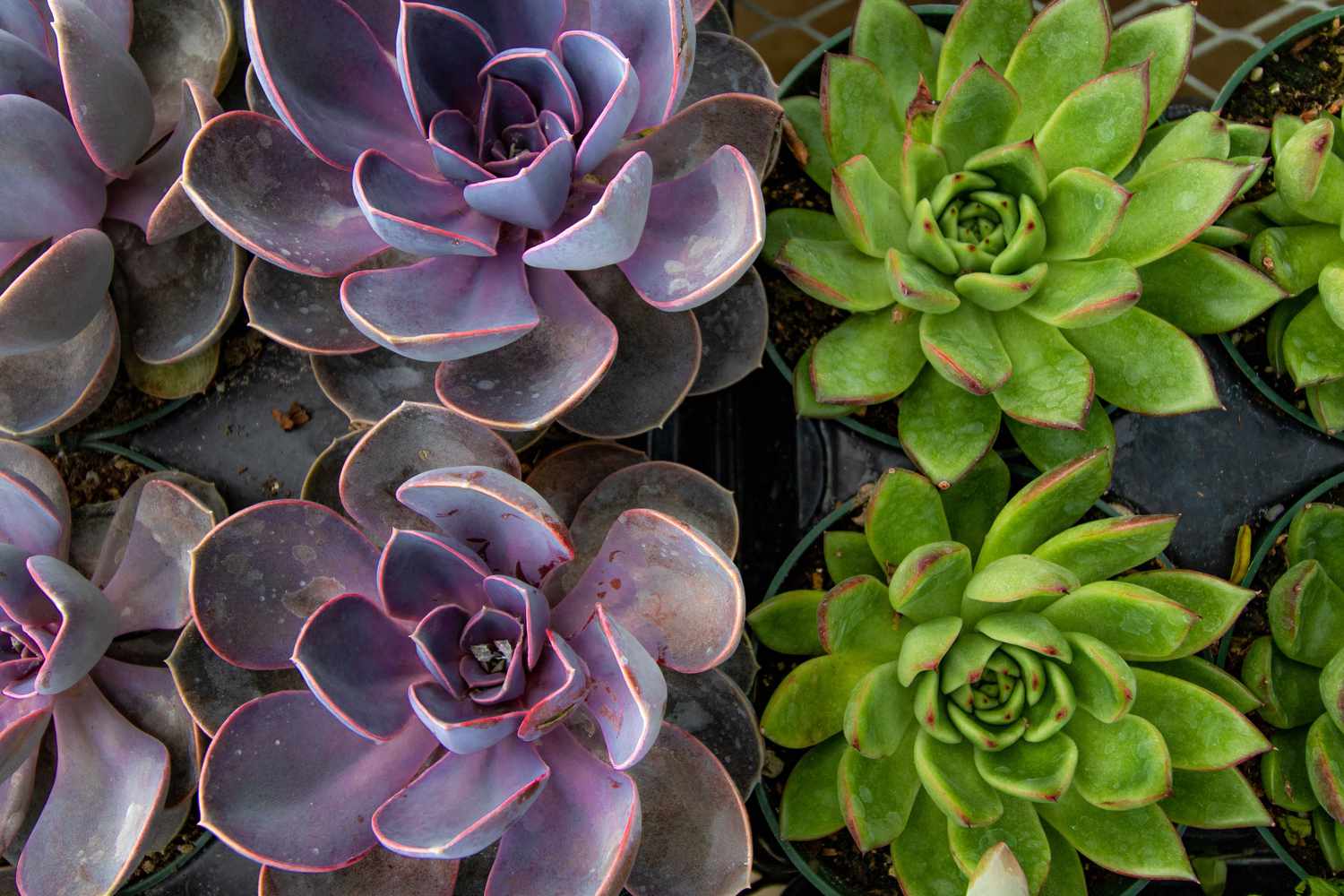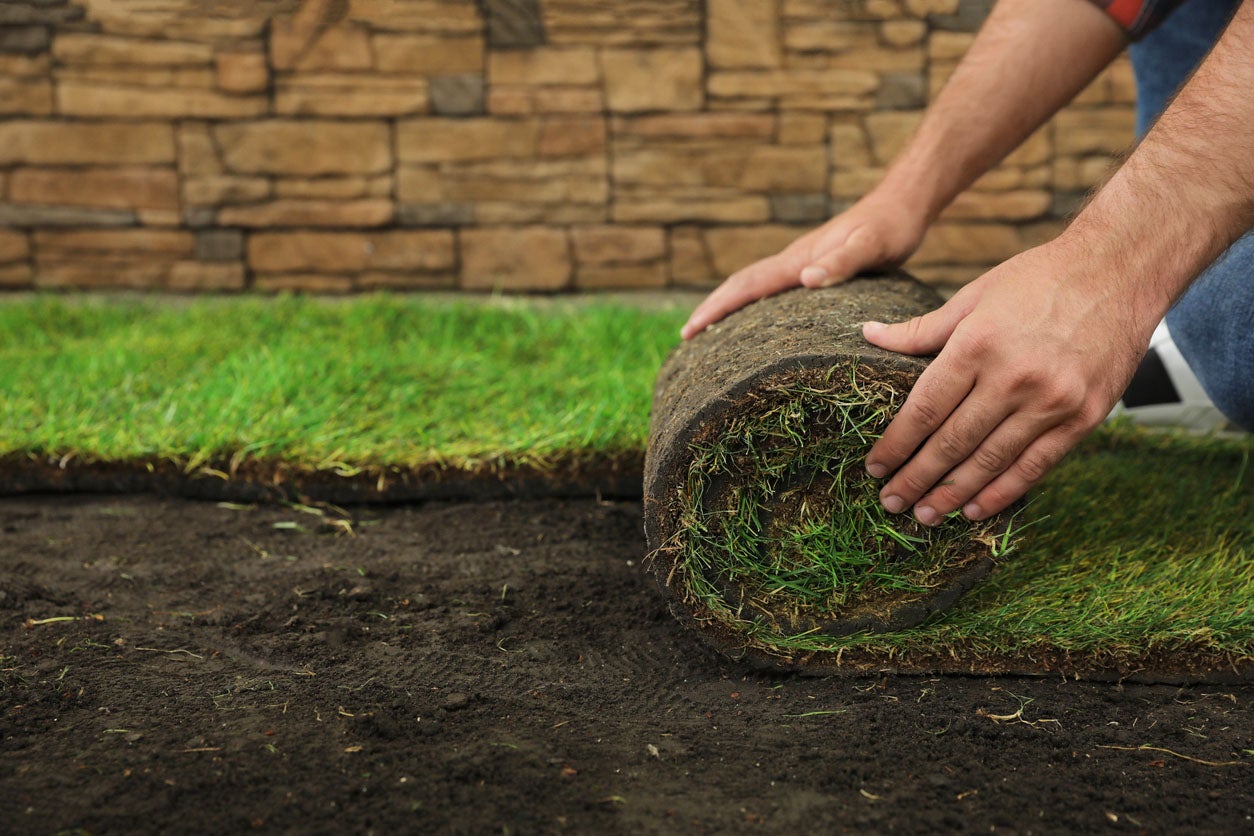Home>Types of Gardening>Ornamental Gardening>How Much Water Do Succulents Need
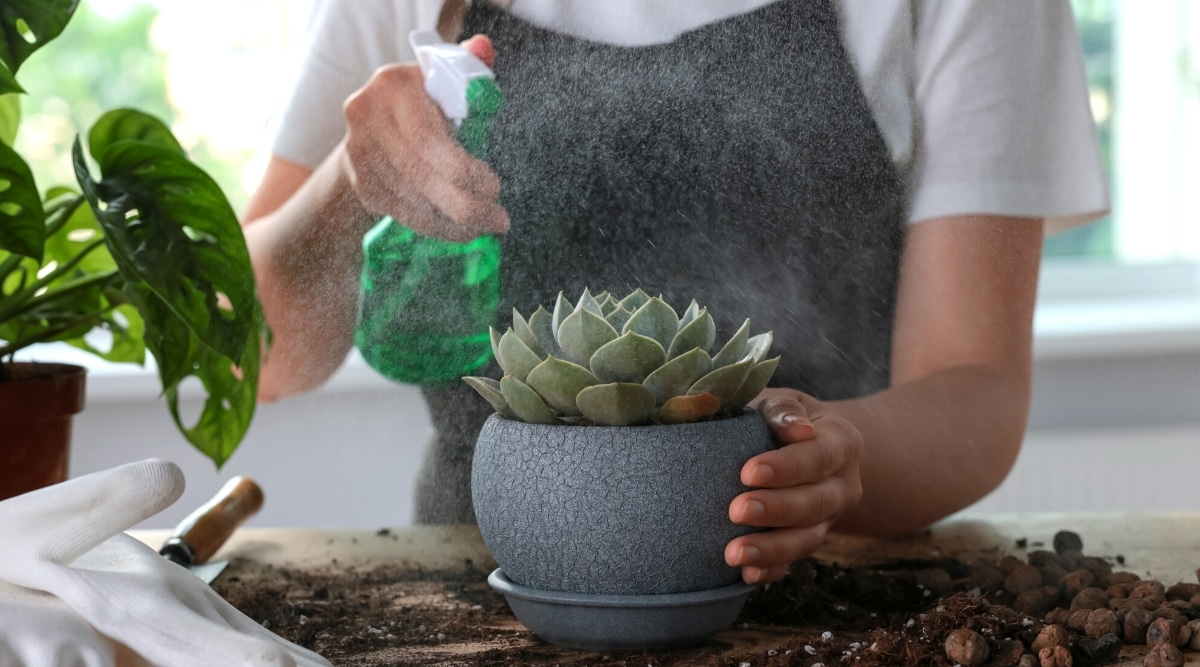

Ornamental Gardening
How Much Water Do Succulents Need
Modified: February 9, 2024
Discover the watering needs of succulents in ornamental gardening. Learn how much water succulents need to thrive and avoid over-watering.
(Many of the links in this article redirect to a specific reviewed product. Your purchase of these products through affiliate links helps to generate commission for Chicagolandgardening.com, at no extra cost. Learn more)
Table of Contents
Introduction
Welcome to the world of succulents, where beauty meets resilience. Characterized by their thick, fleshy leaves and ability to store water, succulents have captured the hearts of gardeners and plant enthusiasts around the globe. These ornamental wonders not only add a touch of charm to any garden or indoor space but also require minimal care, making them ideal for even the novice gardener.
In this article, we will explore the fascinating world of succulents and delve into the critical factor of watering. Understanding how much water succulents need is essential in ensuring their health and longevity. While these plants are known for their ability to withstand drought-like conditions, proper watering is still crucial to prevent their delicate roots from rotting.
Whether you are new to the world of succulents or a seasoned enthusiast looking to refine your watering techniques, this article will provide you with valuable insights and practical tips to help you master the art of watering your precious succulent collection.
Understanding Succulents
Before delving into the watering needs of succulents, it is important to have a basic understanding of these unique plants. Succulents are a diverse group of plants, belonging to various families and species. What unites them is their ability to store water in their leaves, stems, or roots, enabling them to survive in arid environments with limited access to moisture.
These water-storing adaptations allow succulents to withstand periods of drought, making them excellent choices for low-water gardens and xeriscaping. Succulents come in a wide range of shapes, sizes, and colors, from the popular Echeveria and Agave varieties to the unique Aloe and Sedum species.
One of the key characteristics of succulents is their thick, fleshy leaves. These leaves contain specialized water-holding cells, called parenchyma cells, which store water for future use. Additionally, succulents have a unique leaf structure, often covered in a waxy or powdery coating, known as a cuticle, which helps reduce water loss through evaporation.
It is important to note that while succulents are adapted to surviving in dry conditions, they still require proper hydration to thrive. The challenge for succulent enthusiasts lies in striking the right balance between watering their plants adequately and avoiding overwatering, which can lead to root rot and other issues.
Now that we have a better understanding of succulents and their water-storing capabilities, let’s explore the various factors that can affect their water needs.
Factors Affecting Water Needs
Several factors come into play when determining the water needs of succulents. Understanding these factors will help you tailor your watering routine to meet the specific requirements of your plants. Here are some key factors to consider:
- Species and Variety: Different succulent species and varieties have varying water needs. Some types, like desert cacti, are highly adapted to dry conditions and require very little water, while others, like certain Echeveria hybrids, may need more frequent watering. Research the specific requirements of your succulent to ensure you provide the right amount of water.
- Season: Succulents’ water needs can vary depending on the season. During the active growing season, typically spring and summer, succulents require more water to support their growth. In contrast, during the dormant period, usually fall and winter, they require less water as their growth slows down.
- Temperature and Humidity: High temperatures and low humidity levels can cause succulents to lose moisture more quickly and may necessitate more frequent watering. Conversely, cooler temperatures and higher humidity levels may reduce their water requirements.
- Light Exposure: Succulents exposed to intense sunlight may require more frequent watering as the heat and light can cause water to evaporate more rapidly. However, be cautious not to overwater succulents in shady areas, as the soil may take longer to dry out.
- Pot Size and Drainage: The size and type of pot you choose can impact the water needs of your succulents. A smaller pot will dry out faster, requiring more frequent watering, while a larger pot may retain moisture longer. Additionally, ensure your pots have drainage holes to prevent waterlogging, as stagnant water can lead to root rot.
By considering these factors and monitoring your succulents closely, you can determine the optimal watering regimen that suits their individual needs. In the next section, we will discuss how to establish an appropriate watering frequency for your succulents.
Watering Frequency
Establishing the right watering frequency for your succulents is crucial for their overall health and well-being. While succulents are known for their ability to tolerate drought, they still require regular hydration to thrive. However, it’s important to strike a balance and avoid overwatering, as excessive moisture can lead to root rot and other issues.
The frequency of watering your succulents will depend on various factors, such as the plant species, the environmental conditions, and the size of the pot. Generally, succulents prefer a “soak and dry” approach to watering. This means thoroughly saturating the soil and allowing it to dry out completely before watering again.
As a general guideline, water your succulents when the top inch of soil feels dry. To check if your plants need water, gently insert your finger into the soil near the base of the plant. If it feels dry, it’s time to water. If it still feels moist, it’s best to wait a few more days before watering.
It’s important to note that as succulents enter their dormant period in the fall and winter, their watering needs will decrease. During this time, you can reduce the frequency of watering to prevent overhydration. Always adjust your watering schedule based on the individual needs of your succulents.
Another important factor to consider when determining watering frequency is the type of potting mix used. Well-draining soil is essential for succulents as it prevents water from sitting around the roots for extended periods. Ensure your potting mix provides excellent drainage by adding materials like perlite or coarse sand.
Remember, it’s better to underwater than to overwater succulents. Succulents can survive with less water, but they will quickly deteriorate if exposed to too much moisture. Developing a routine and observing your plants closely will help you find the perfect balance of watering frequency for your succulents.
Signs of Underwatering
It’s important to be able to recognize the signs of underwatering in your succulents so that you can take prompt action to remedy the situation. While succulents are adapted to withstand dry conditions, prolonged lack of water can cause them to suffer and eventually decline. Here are some common signs of underwatering to look out for:
- Wilting: One of the first signs of underwatering is wilting. Succulents may appear droopy and lackluster when they are not receiving enough water. The leaves may also start to lose their firmness and become limp.
- Shriveling: Succulents rely on their water storage cells to maintain their plump appearance. When underwatered, these cells gradually deplete, causing the leaves to shrink and wrinkle. The succulent may appear shriveled and deflated.
- Yellowing Leaves: As the plant becomes dehydrated, the leaves may turn yellow and start to dry out. This discoloration is a clear indication that the succulent is not receiving sufficient water.
- Slow or Stunted Growth: Underwatered succulents may exhibit slow or stunted growth. Without an adequate water supply, the plant’s growth process is hindered, and new leaves or stems may be smaller than usual.
- Dormancy: In extreme cases of underwatering, succulents may enter a state of dormancy as a survival mechanism. The plant will conserve energy and halt its growth until sufficient water becomes available.
If you notice any of these signs, it’s important to address the issue promptly. Start by thoroughly watering your succulent, allowing the excess water to drain out completely. Ensure that the soil is fully saturated and moist, but not waterlogged.
It’s also a good practice to check the roots for any signs of damage or rot. Healthy succulent roots should be firm and white. If you notice any mushy, dark-colored roots, it may indicate overwatering or root rot, which can be further exacerbated by underwatering.
Remember that prevention is key when it comes to underwatering. Regularly monitor your succulents and establish a consistent watering routine based on their specific needs and environmental conditions. In the next section, we will discuss the telltale signs of overwatering and how to address this issue.
Signs of Overwatering
Overwatering is a common mistake that can be detrimental to the health of your succulents. While succulents are adapted to withstand drought, they are not able to tolerate excessive moisture. Overwatering can lead to root rot, fungal infections, and other issues. Here are some signs that indicate your succulent may be receiving too much water:
- Yellowing and Translucent Leaves: Overwatered succulents often develop yellow, translucent leaves. This is a result of the excess water disrupting the balance of nutrients in the plant and causing nutrient deficiencies.
- Soft and Mushy Leaves: When a succulent is overwatered, its leaves may become soft and mushy to the touch. This is an indication that the cells are becoming waterlogged and unable to maintain their structural integrity.
- Blackened or Rotting Roots: Excessive moisture can lead to root rot, which is characterized by blackened, mushy roots. If you suspect root rot, carefully remove the succulent from its pot and inspect the roots. Healthy roots are firm and white, while rotting roots will be soft, discolored, and emit a foul odor.
- Fungal Growth: Overwatering creates a moist environment that is conducive to fungal growth. If you notice any mold or fungal growth on the soil surface or around the base of your succulent, it is likely a result of overwatering.
- Drooping or Soggy Appearance: Overwatered succulents may appear droopy or have a soggy appearance. The leaves may seem swollen or enlarged due to the excess water content.
If you observe any of these signs, it’s important to take immediate action to prevent further damage. Start by withholding water and allowing the soil to dry out completely. Ensure that your succulent is in a pot with good drainage to facilitate proper water flow.
If root rot is present, you will need to carefully remove and trim the affected roots using clean, sharp tools. Repot the succulent in fresh, well-draining soil to prevent further spread of the fungal infection. Avoid watering the succulent until it shows signs of recovery.
Prevention is key when it comes to overwatering. Establish a watering routine based on the specific needs of your succulents and the environmental conditions. Always err on the side of underwatering rather than overwatering. Remember, succulents thrive in drier conditions, and they can quickly bounce back from a period of mild drought stress.
Watering Techniques for Succulents
Proper watering techniques are essential to ensure the health and vitality of your succulents. Applying the right amount of water using the correct method will help prevent issues such as overwatering, root rot, and nutrient deficiencies. Here are some effective watering techniques specifically tailored for succulents:
- Soak and Dry Method: The “soak and dry” method is the most recommended way to water succulents. This technique involves thoroughly saturating the soil until water drains out of the pot’s drainage holes. Allow the soil to dry out completely before watering again. This mimics the natural watering patterns of succulents in their native arid habitats.
- Bottom Watering: Another effective technique for watering succulents is bottom watering. Place your potted succulents in a shallow tray filled with water, and allow the plants to absorb water through the drainage holes. Once the top inch of soil feels moist, remove the pots from the tray and empty any excess water. Bottom watering can help prevent overwatering and ensure that the roots receive sufficient moisture.
- Avoid Mist or Spray Bottle: While misting or using a spray bottle may seem like a gentle way to water your succulents, it is not recommended. Misting only wets the leaves and does not provide enough moisture to the roots. Additionally, prolonged moisture on the leaves can lead to fungal diseases. Water the soil directly instead to ensure the roots receive the necessary hydration.
- Watering from Below: If your succulents are planted in the ground or larger containers, consider using a drip irrigation system or a watering wand with a long spout to water directly at the soil level. This allows the water to reach the deeper roots and encourages downward growth.
- Frequency and Timing: As discussed earlier, the frequency of watering will vary depending on the season, temperature, and other factors. During the active growing season, water your succulents approximately once a week or as needed. In the dormant period, reduce watering to every two to three weeks. Watering in the morning or early afternoon allows excess moisture to evaporate before cooler evening temperatures, preventing the risk of fungal diseases.
Remember, it’s crucial to adjust your watering techniques based on the specific needs of your succulents. Factors such as the plant species, pot size, and environmental conditions play a significant role in determining the appropriate watering method and frequency.
By adopting these watering techniques and closely monitoring your succulents, you can ensure they receive the right amount of water to thrive and bring beauty to your garden or indoor space.
Choosing the Right Potting Mix
A crucial aspect of successful succulent care is choosing the right potting mix. The ideal potting mix for succulents should provide excellent drainage while retaining enough moisture to support the plants’ water needs. Here are some factors to consider when selecting a potting mix for your succulents:
- Well-Draining: Succulents are prone to root rot if their roots sit in waterlogged soil for extended periods. Therefore, it is essential to choose a potting mix that allows excess water to drain freely. Look for a mix that consists of components such as perlite, pumice, or coarse sand to ensure sufficient drainage.
- Aeration: Succulent roots require oxygen to thrive. A potting mix with good aeration allows the roots to breathe and prevents them from becoming suffocated. Incorporating materials like perlite or vermiculite into the mix helps create air pockets and improves overall aeration.
- Water Retention: While succulents prefer drier soil, they still need some moisture to thrive. A potting mix that retains some water without becoming waterlogged provides a balance between hydration and drainage. Adding materials like coconut coir or peat moss can help retain moisture in the mix without creating excess dampness.
- Nutrient Content: Although succulents are adapted to nutrient-poor environments, they still require some essential nutrients to thrive. Look for a potting mix that contains a balanced blend of organic matter and slow-release fertilizers to provide the necessary nutrients for healthy growth.
- pH Level: Succulents prefer a slightly acidic to neutral pH range. It’s important to choose a potting mix with a pH level that falls within this range. Testing the pH of the potting mix or using a pre-made succulent-specific mix can help ensure the correct pH balance.
If you prefer a DIY approach, you can create your own succulent potting mix by combining equal parts of well-draining materials like coarse sand, perlite, and a quality potting soil. This allows you to tailor the mix to the specific needs of your succulents.
Alternatively, there are also commercially available succulent potting mixes that are specifically formulated for the unique requirements of these plants. These mixes often contain a well-balanced blend of materials that promote drainage, aeration, and water retention.
Remember, the potting mix is one of the key factors in avoiding issues like overwatering and root rot. By selecting a suitable mix, you provide your succulents with the optimal growing environment, which contributes to their overall health and longevity.
Watering Succulents in Different Seasons
The watering needs of succulents can vary depending on the different seasons of the year. Understanding how to adjust your watering routine accordingly is essential to ensure the health and vitality of your plants. Here are some guidelines for watering succulents in different seasons:
- Spring and Summer: During the active growing season, succulents require more frequent watering. As temperatures rise and daylight hours increase, the plants’ metabolic activity intensifies, and they require additional hydration to support their growth. Monitor the moisture level of the soil and water when the top inch feels dry. Be mindful of hot weather and increased evaporation, which may necessitate more frequent watering.
- Fall and Winter: As temperatures start to cool and daylight hours shorten, succulents enter a dormant period. During this time, their water requirements decrease significantly. Reduce the frequency of watering to prevent excess moisture and allow the soil to dry out more between waterings. Remember that although succulents may require less water, they still need some hydration to survive. Check the soil moisture levels periodically and water sparingly when necessary.
- Temperature and Humidity: Besides considering the seasonal changes, pay attention to the temperature and humidity levels in your specific location. High temperatures and low humidity can cause succulents to lose moisture more quickly, necessitating more frequent watering. In areas with high humidity or cooler temperatures, succulents may require less water as the soil will take longer to dry out.
- Rainwater: Take advantage of natural rainfall whenever possible. Rainwater is beneficial for succulents as it is typically free of chemicals found in tap water and may provide additional nutrients. However, be cautious of excessive rainfall, as it can lead to waterlogged soil. If your area experiences heavy rainfall, ensure that your pots have adequate drainage to prevent root rot.
- Observation is Key: Regardless of the season, it is important to closely observe your succulents and adjust your watering routine accordingly. Factors such as the plant’s species, pot size, and exposure to sunlight can influence their water needs. Remember to always check the soil moisture level before watering and make adjustments based on the specific requirements of your succulents.
By adapting your watering approach to the changing seasons and being attentive to the needs of your succulents, you can help them thrive and maintain their vibrant beauty throughout the year.
Conclusion
Congratulations! You’ve now gained valuable insights into the art of watering succulents. As you’ve learned, succulents have specific water needs due to their ability to store water in their leaves, stems, or roots. Finding the right balance between providing adequate hydration and avoiding overwatering is crucial for their health and longevity.
Understanding the factors that affect succulent water requirements, such as species and variety, season, temperature, and potting mix, will guide you in establishing an effective watering routine. The “soak and dry” method, bottom watering, watering from below, and considering the frequency and timing of watering are proven techniques that promote healthy succulent growth.
Knowing the signs of both underwatering and overwatering is essential for prompt intervention and preventing any adverse effects on your succulents. By observing the condition of the leaves, roots, and overall appearance of the plants, you can take appropriate action to rectify any watering issues.
Additionally, choosing the right potting mix that provides excellent drainage, aeration, and proper water retention is pivotal in creating an optimal environment for succulents to thrive.
Don’t forget to adjust your watering routine according to the different seasons and environmental conditions. Understanding the specific needs of your succulents and making necessary watering adjustments will ensure their well-being throughout the year.
With this newfound knowledge and attention to detail, you can confidently care for your succulents and enjoy their beauty and resilience in your garden or indoor space. Remember to always observe, adapt, and nurture your succulents with love and care, and you’ll be rewarded with a stunning and healthy collection of these fascinating plants.

